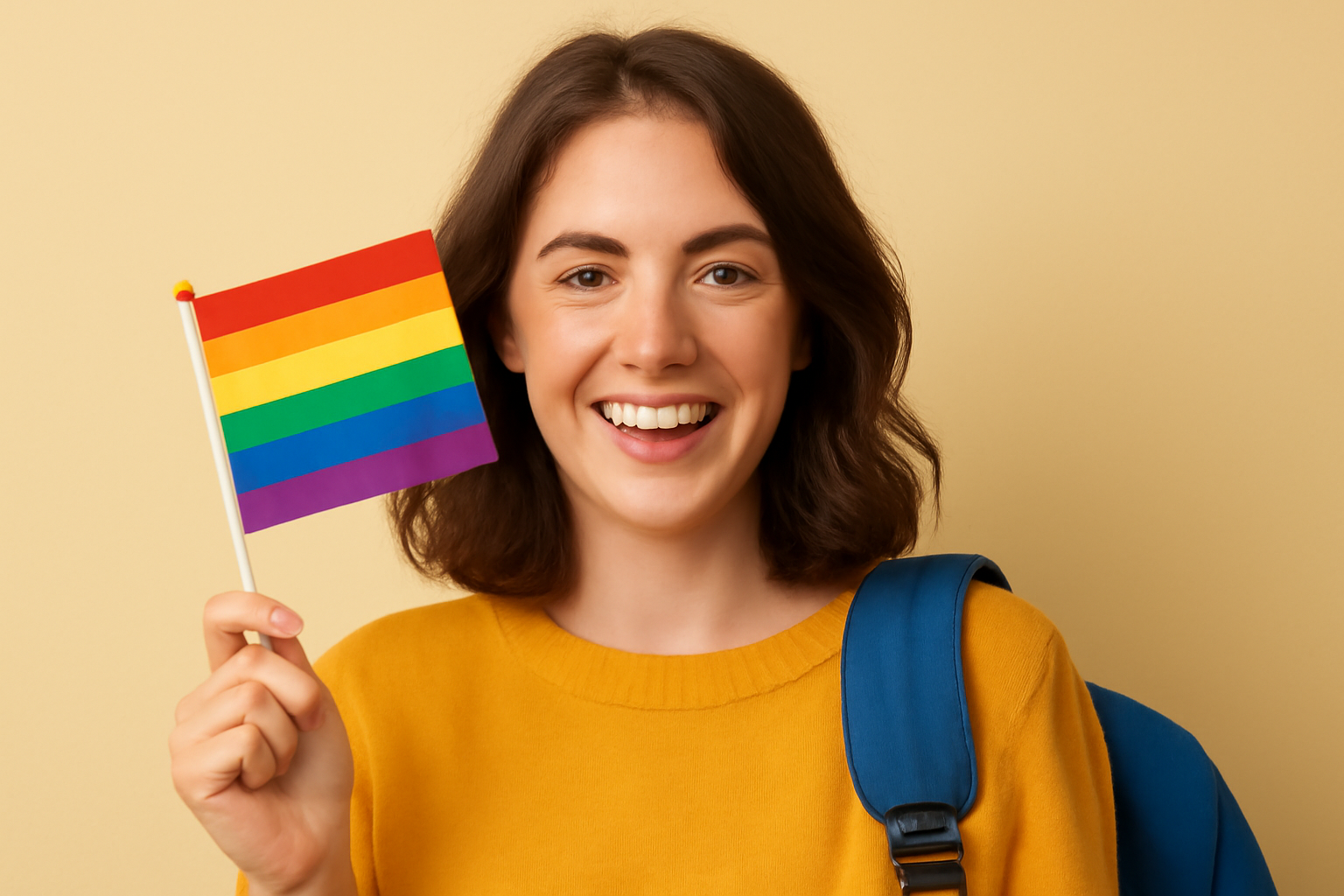
The celebration of LGBTQ+ History Month in the UK offers a wonderful opportunity to delve into the vibrant and often overlooked stories of the people and events that paved the way for today’s LGBTQ+ community. Unfortunately, much of this rich history was obscured for many in the UK due to policies like Section 28, which prohibited the discussion of LGBTQ+ topics in schools for over a decade. Despite this, the history of LGBTQ+ individuals is filled with remarkable moments of both subtle defiance and upfront visibility.
Throughout history, people have courageously defied rigid gender and sexual norms that some still hold as standard today. Many of these norms are more recent than we might think. From samurai opposing Japan's sodomy laws to the first recorded pick-up line, here are nine intriguing LGBTQ+ history facts that probably weren't part of your school curriculum.
1. "Man" and "Girl" Were Once Gender-Neutral Terms
In earlier times, the word "girl" referred to a child of any gender until the late 15th century. Differentiation was achieved by calling male children "knave girls" or "maiden child" and female children "gay girls." Similarly, "man" used to be a term for any person, regardless of gender, challenging modern conceptions of masculinity.
2. The Catholic Church Once Recognized Same-Sex Unions
Historical documents reveal that forms of same-sex marriages existed as early as the 3rd and 10th centuries. These ceremonies, recognized by ancient church liturgies, involved blessings and gatherings akin to traditional marriages. The rite of "adelphopoiesis" even united St Sergius and St Bacchus, who were stripped of sainthood much later in 1969.
3. The Etymological Journey of "Gay"
The term "gay" has evolved significantly, originating from the 12th-century French word for carefree. By the 19th century, it connoted sexual immorality, particularly among womanizing men. The transition to its association with homosexuality emerged in the late 19th century, with "gay cat" being early slang for young men trading sex. By the 1950s, "gay" was widely adopted to describe homosexuals.
4. The First Known Chat-Up Line Between Gods
The ancient Egyptian story "The Tale of Horus and Seth" includes what is arguably the first chat-up line. During their contest for Osiris’ throne, Seth flirtatiously comments on Horus's physique, leading to a sexual encounter. This myth exemplifies early queer narratives in mythology.
5. History's Earliest Known LGBTQ+ Couple
Dating back to 2,400 BC, Niankhkhnum and Khnumhotep are among the first recorded same-sex couples, buried together in a shared tomb in Egypt. Their intimate embrace and the inscription "Joined in life and joined in death" suggest a loving partnership rather than a mere friendship.
6. "They" Was Once the Dominant Pronoun
The singular "they" was a common pronoun in English, utilized by authors like Shakespeare and Austen. However, in the 19th century, English grammar sought symmetry with Latin, leading to the rise of gender-specific pronouns. Despite this shift, many languages still use gender-neutral pronouns.
7. Samurai and the Rejection of Sodomy Laws
Japan briefly criminalized sodomy from 1872 to 1882, encountering resistance from samurai, who valued nanshoku (male-on-male sex) as part of their cultural heritage. The tradition was so ingrained that manuals like the Saiseki existed to guide these relationships.
8. America's Early Queer Rebellion Led by Trans People
Long before Stonewall, the 1959 Cooper’s Do-nuts riot in Los Angeles saw trans and gender-diverse individuals confront police harassment. This event marked one of the earliest recorded LGBTQ+ uprisings in the United States, highlighting the pivotal role of trans people in the movement.
9. Ancient Queer Art in the Kangjiashimenji Petroglyphs
The Kangjiashimenji Petroglyphs, dating back 3,000-4,000 years, depict graphic scenes of sexuality, including gender non-conforming figures. These carvings provide evidence of diverse sexual expressions in ancient societies, challenging modern perceptions of gender and sexuality norms.
These fascinating snippets of LGBTQ+ history reveal a world far more diverse and accepting than many might assume. As we honor this history, it is crucial to recognize and celebrate the contributions of LGBTQ+ individuals throughout time.
Related Posts
Triumphant Trans Woman Wins Legal Battle and Inspires Others to Stand Up for Their Rights
Breaking new ground: a landmark victory in transgender rights After battling in courtrooms and enduring endless challenges, Diana Portillo, a transgender woman, has secured a monumental victory in her decade-long fight against workplace discrimination. The result? Nearly $1 million awarded in a historic settlement. But this isn't just a win on paper—it represents a powerful precedent in combati [...]
Pride Month in Latin America: Protests and Demands for Equality
**Celebrating Pride and advocating LGBTQ+ rights in Latin America** Pride Month in Latin America was a lively mix where celebration met activism. Communities united, not just throwing a party but making a stand—demanding equality and pushing governments toward better protection and rights recognition. Throughout Latin America, pride events erupted in marches and cultural displays, each with a c [...]
Transgender Erasure Actions Implemented by National Park Service
```html Trump administration's impact on national park service and transgender recognition The Trump administration made notable moves in undermining transgender representation, which included directing agencies like National Park Service not include "T" and "Q" when they refered “LGBTQ” in any official communication. This move seems part a broader plan by this administration aimed at reducin [...]